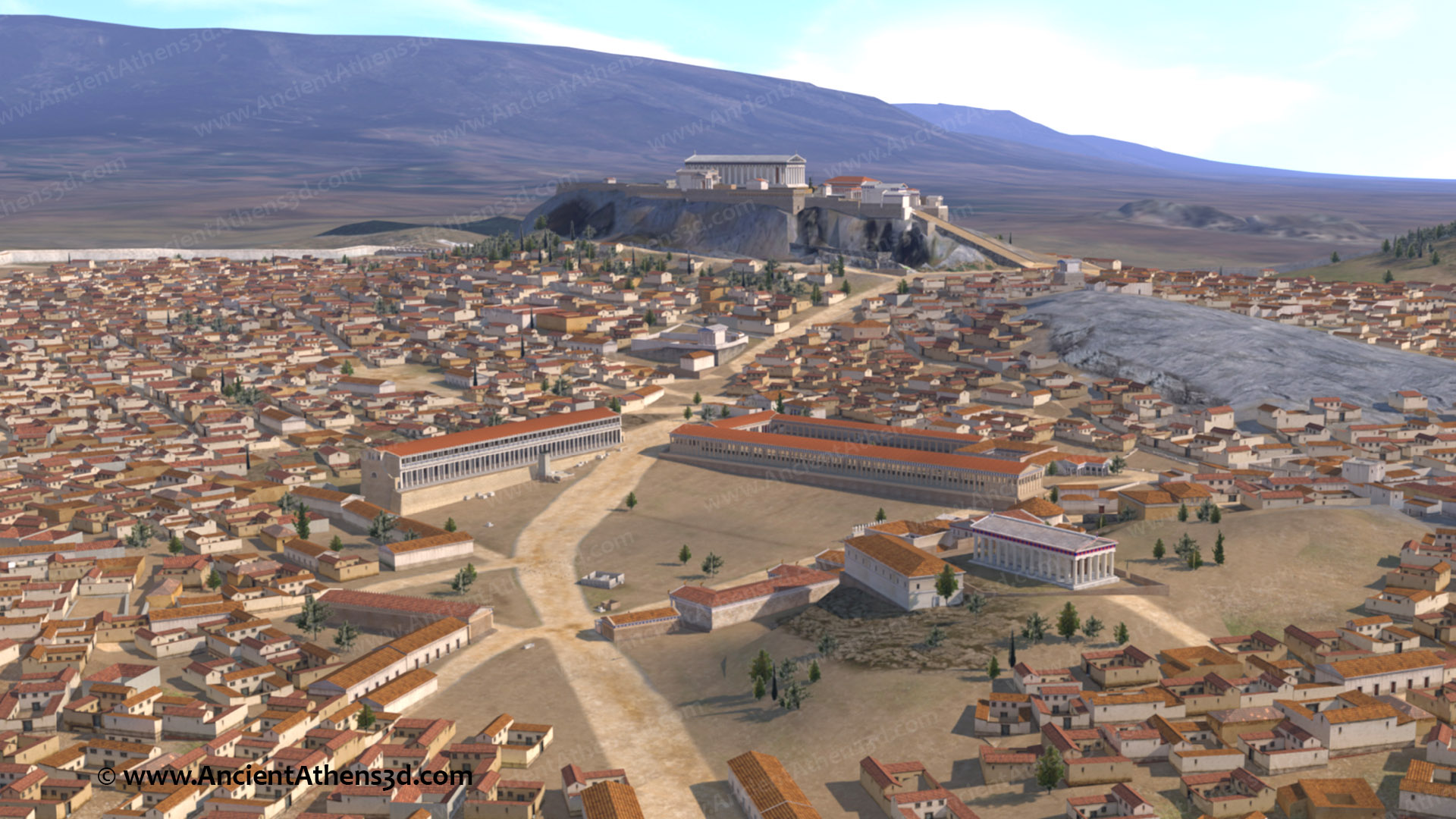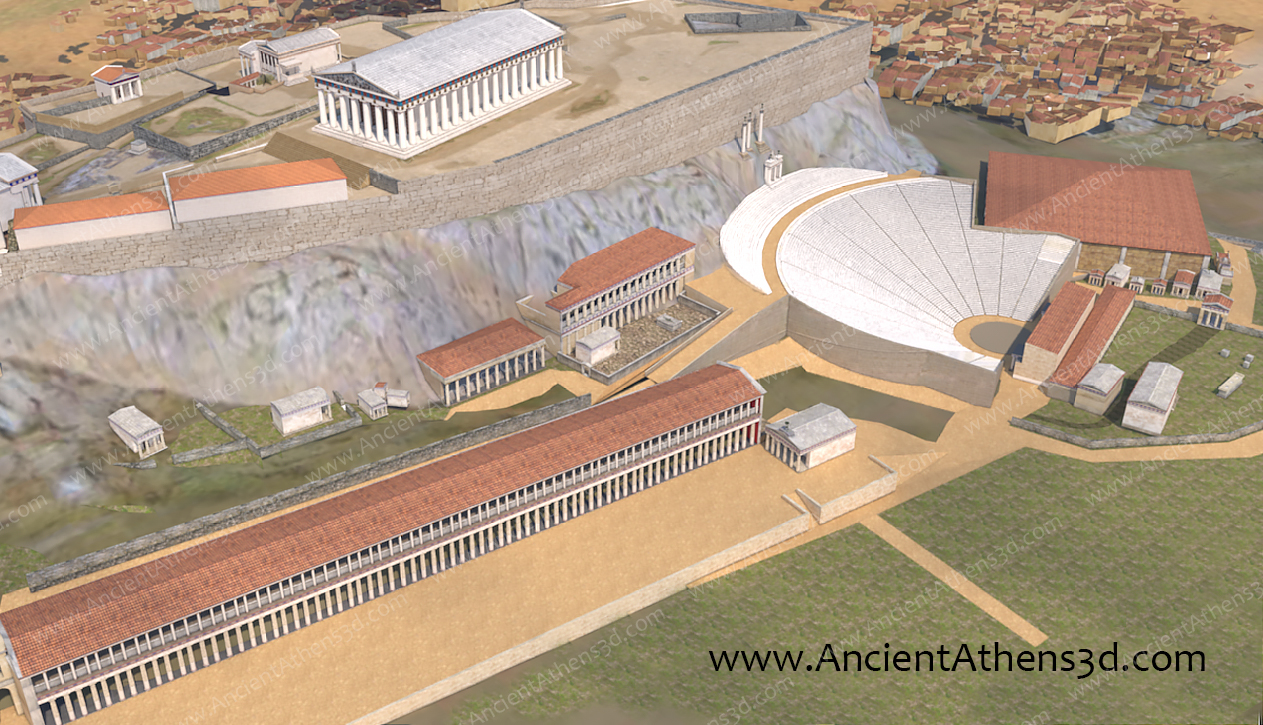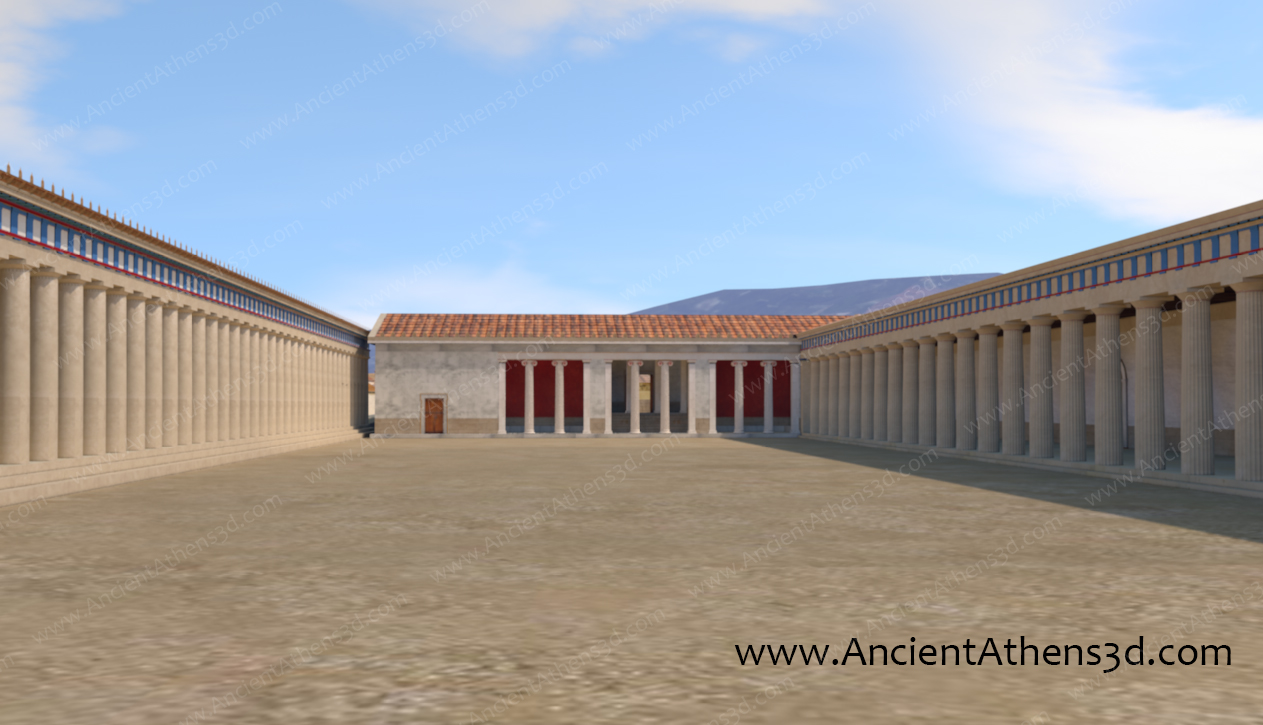Temple of Apollo Patroos
During the hellenistic period, around 300 BC, the Agora of Athens still retained its commercial, social and political character. Between the various public buildings of the western side, stood the Temple of Apollo Patroos (Fatherly). Named as such because Apollo was the father of Ion, founder of the Ionian Greeks, a tribe that included the Athenians.
Special thanks to Chrysanthos Kanellopoulos, professor of Archaeology for his help in the following reconstructions which were based upon his CAD plans he provided.The statues were based on the 3d models by Scan the World. |
The temple of Apollo Patroos dates to either the last half of the 4th century or the early decades of the 3rd century BC. This was the only Greek temple and, perhaps, the most beautiful building in the hellenistic phase of the Agora.
It was built in the same place where an archaic temple -probably also dedicated to the same god- stood, which was destroyed during the Persian invasion of 480 BC.
The hellenistic temple measured 10x16,5 m approximately, while its height reached 9 metres. It was of Ionic Order, tetrastyle in antis or, according to other studies, a hexastyle prostyle. Τhe type of the antae speaks for a tetrastyle in antis arrangement, yet the krepis suggests a hexastyle plan. In the reconstructions of this page, both arrangements are presented with slightly different colour approaches.
The unknown to us today, architect of the temple, drew inspiration from the design of the Erechtheion, the most sacred temple of the city that was built on the Acropolis more than a century earlier. The temple of Apollo Patroos copies at a large extend the elevation of the Erechtheion, while the Ionic column capitals are almost identical in both temples. They both also have almost identical widths.
Unusually to an Ionic temple, the pediment was decorated with sculptures that featured Apollo’s epiphany flanked by the Muses. The acroteria represented the slaughter of the Niobids (corners) by Apollo and Artemis (center).
In the pronaos, on top of a marble bench, stood two statues of Apollo by sculptors Leochares and Kalamis. Quite possibly, a ritual relief to Apollo Patrios and two omphaloi (symbols of Apollo) found in the west area of the Agora also stood on the same bench.
In the interior of the cella, stood the large marble statue of Apollo made by the sculptor Euphranor. Part of the statue is preserved today in the Museum of the Agora.
A bronze grill in the doorway opening allowed for view of the interior and the statue, while the doors were wide open, to prevent worshipers from entering.
In the north side of the temple, there was another one, very small, which was dedicated to god Zeus and goddess Athena Phratria.
The temple of Apollo Patroos was destroyed in 267 AD during the sack of Athens by the Heruli. Its remains were fully excavated in the 1930s.


















